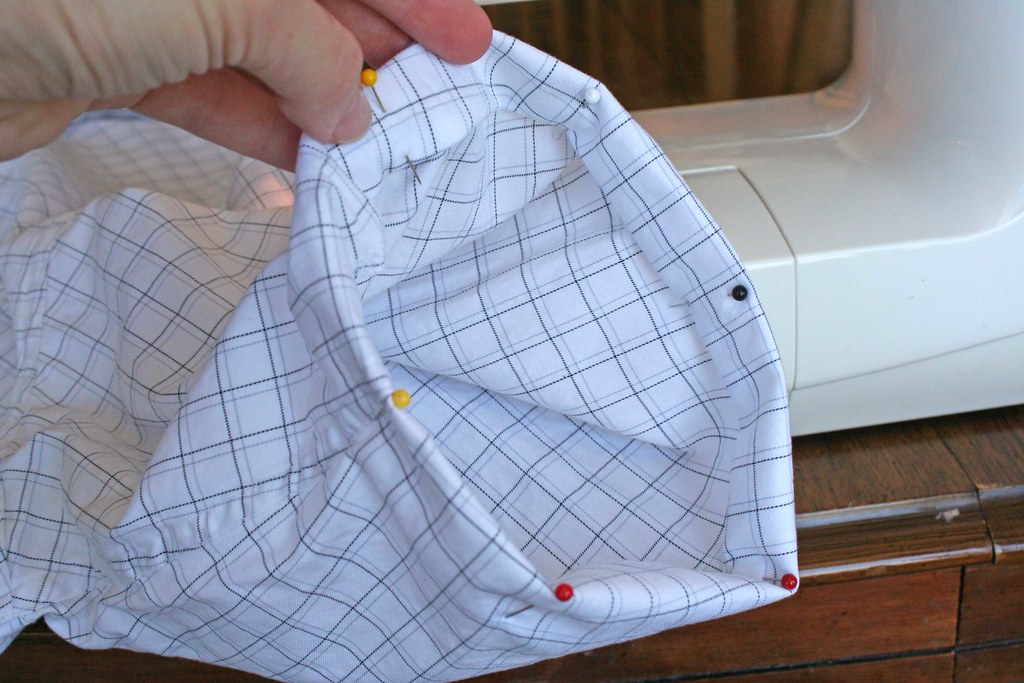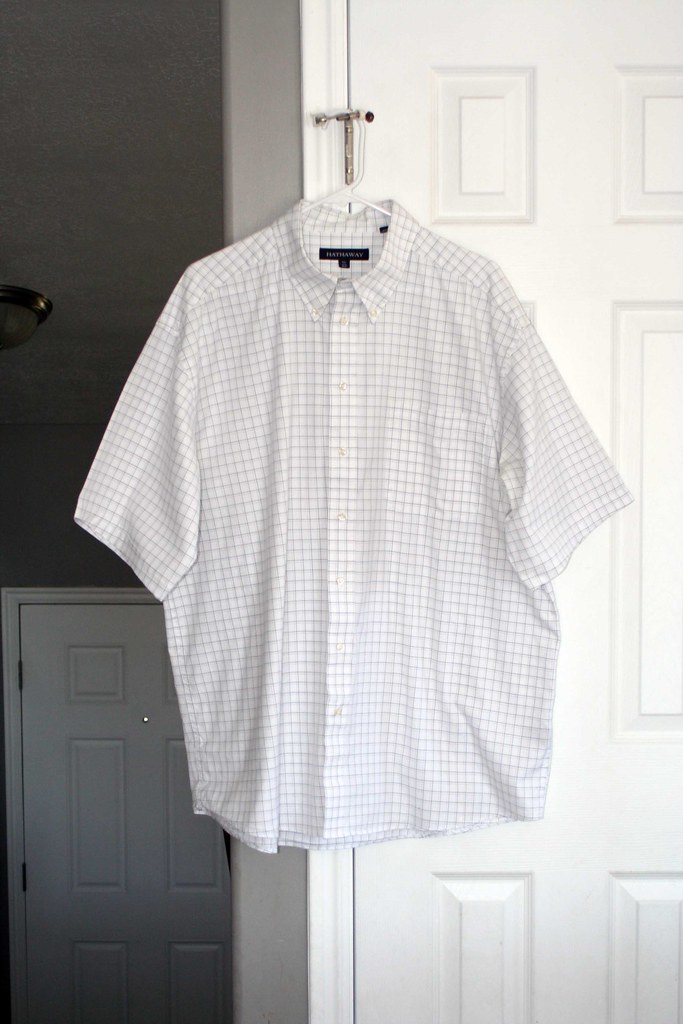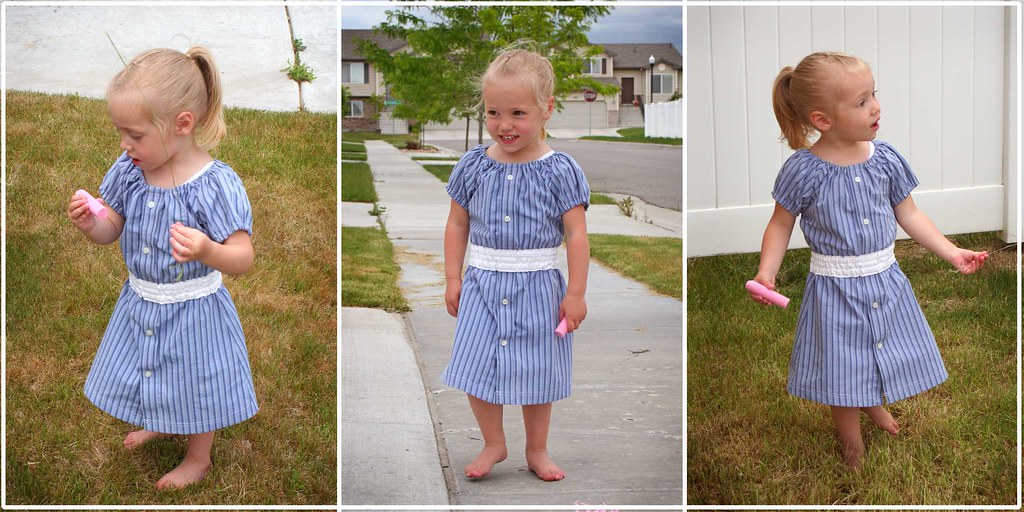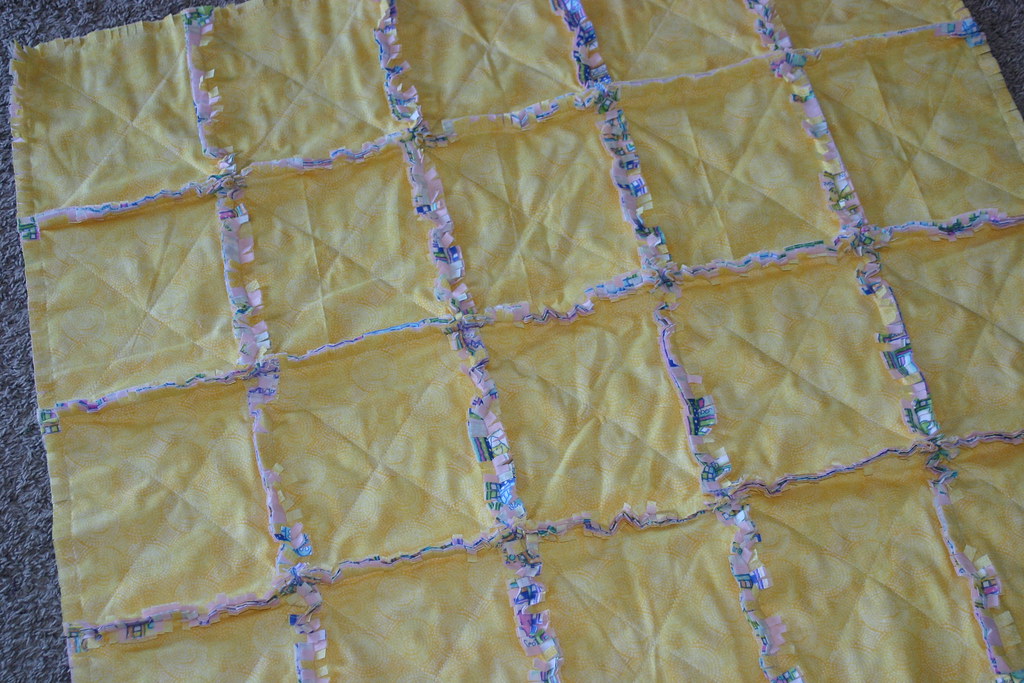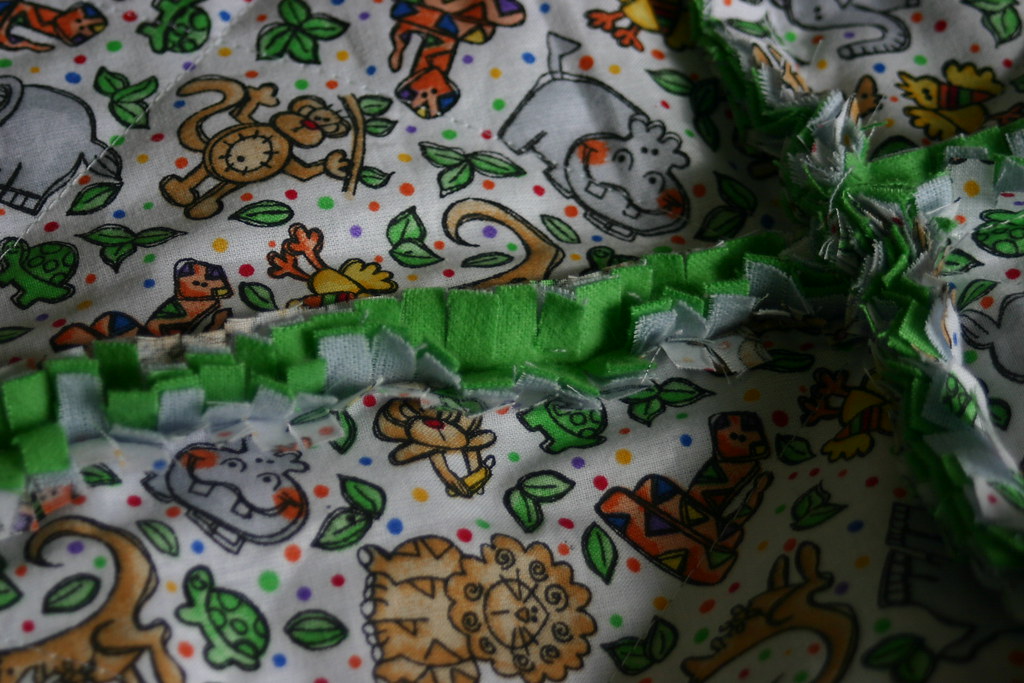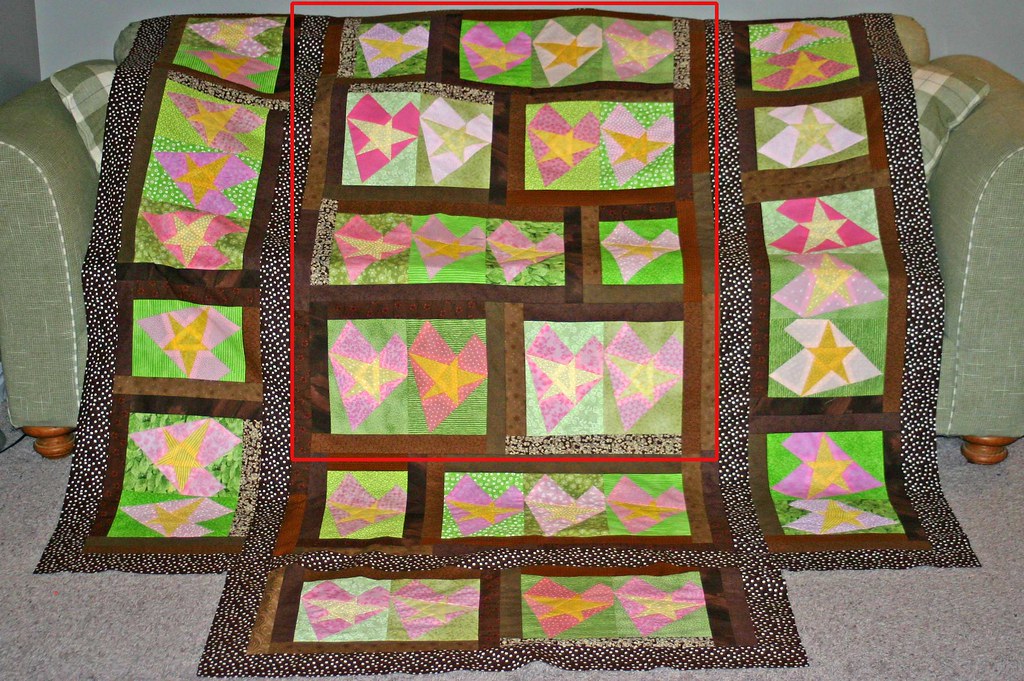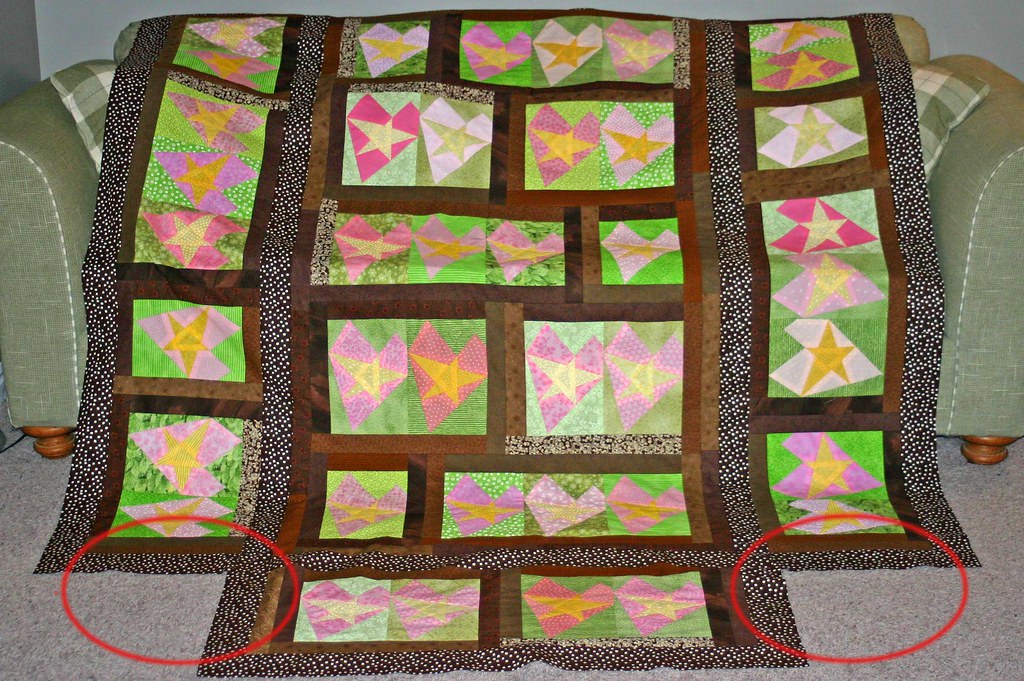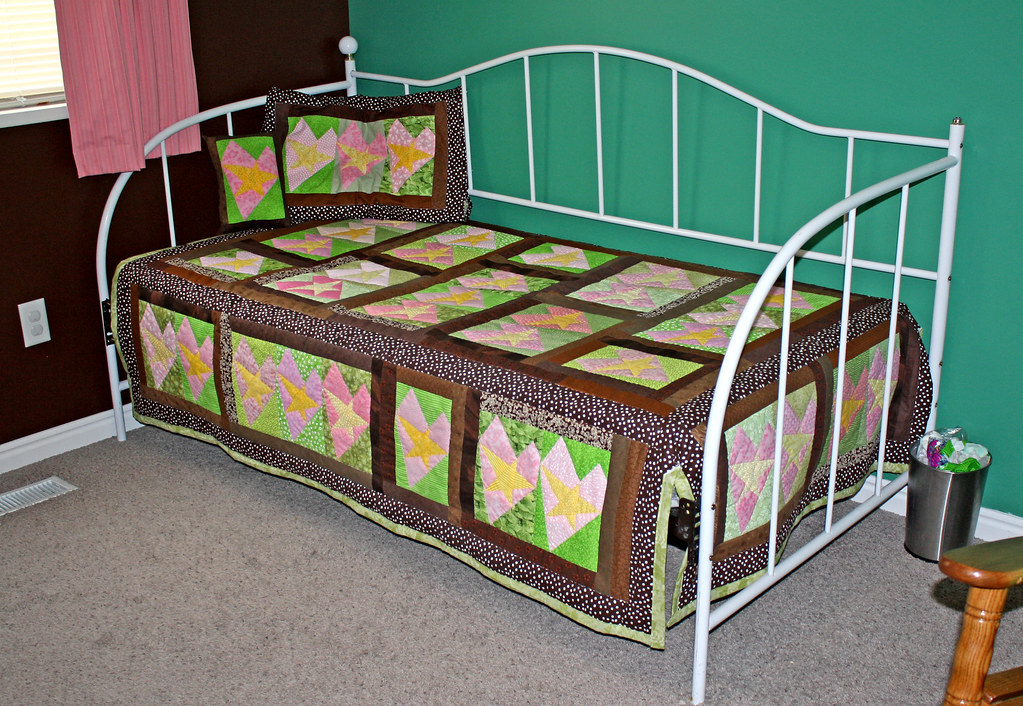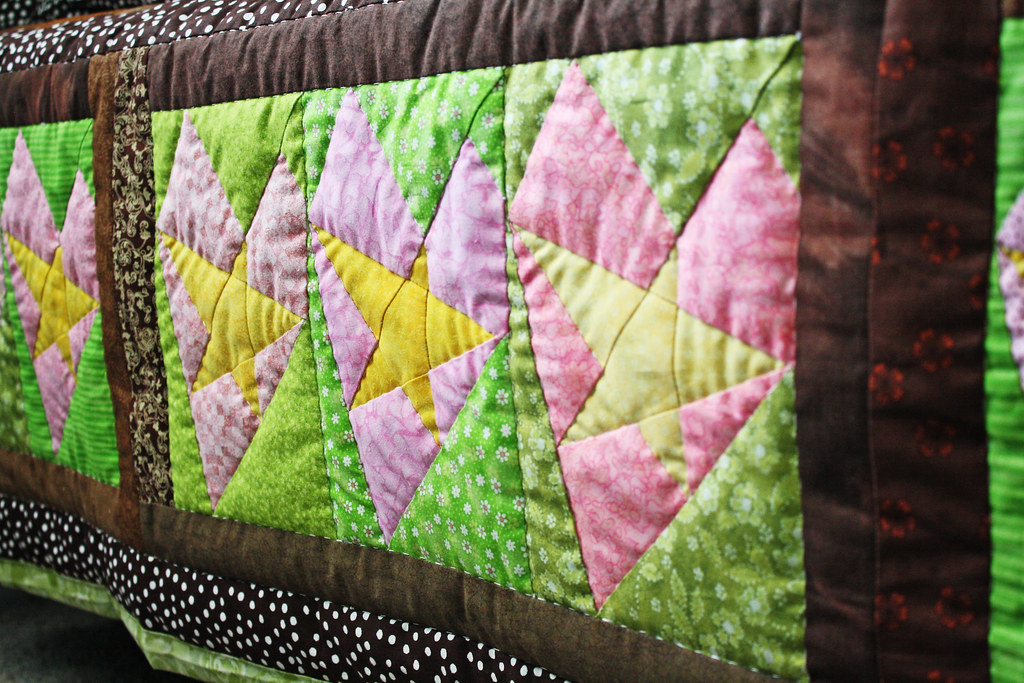My husband finds dress shirts that he likes all the time, but his biggest problem is that he
hates long sleeves with a fiery passion!! So, I have spent a lot of time cutting off and hemming shirt-sleeves for him. Since this can be such a useful task in stretching a family's budget, I thought I would show you all how I do it.
First, find a shirt your husband already owns, which has a sleeve length that he likes. Lay it out flat (iron it if you must,) and measure the top and bottom of it:

You will need to add 1 and 1/4 inches to each measurement to allow for the hem.
Next, take your bottom measurement (+ 1-1/4") and measure out from the armpit on the sleeve you want to cut off:

Make a small cut:

Do the same for the top (except use the top measurement + 1-1/4".)


Insert your scissors in the hole and carefully cut only the top layer from one marking to the other. (I just eyeball this, but you could take a ruler and some fabric chalk to mark it before cutting, if you want.)

Turn the sleeve over and cut the other side from one mark to the other. Keep your scissors lifted slightly so you don't cut the bottom side.
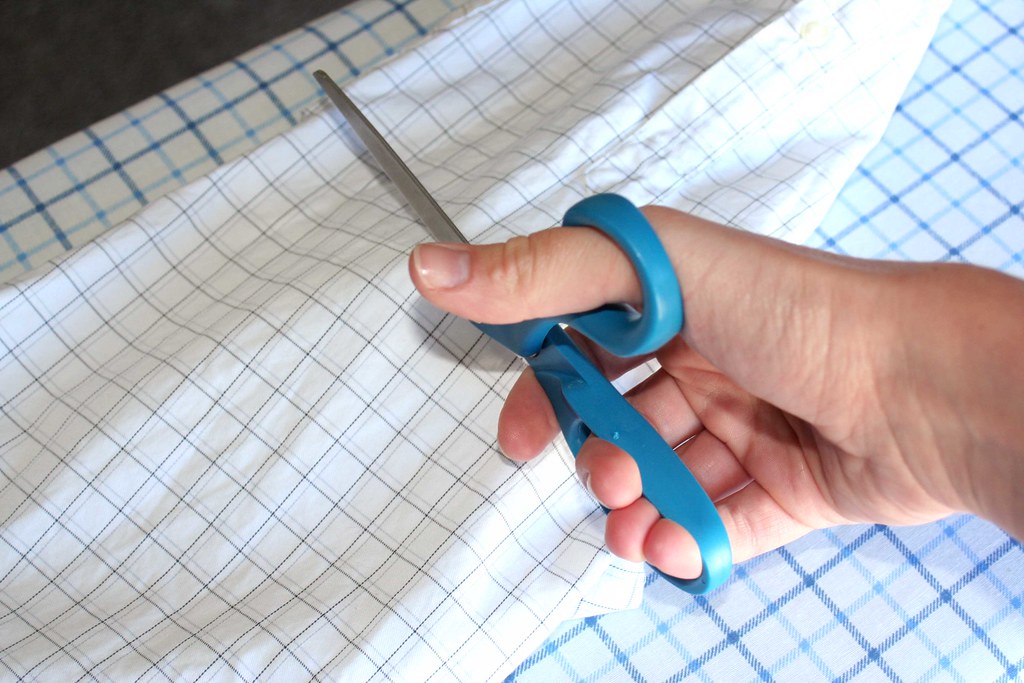
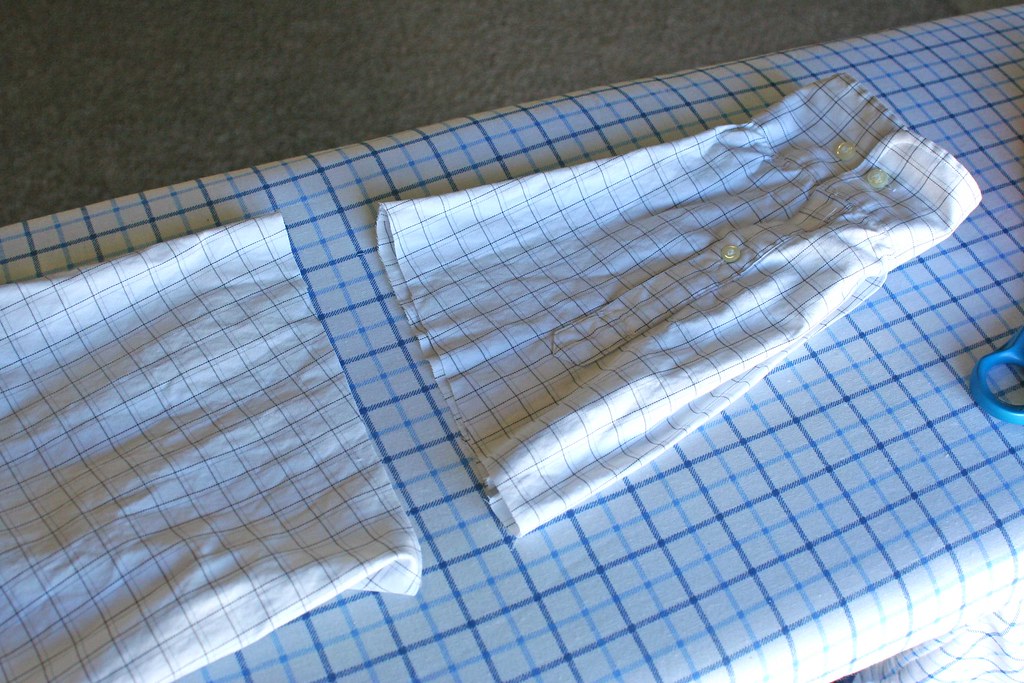
After finishing both sleeves, if you have a surger, surge around the bottom edge of your sleeve. (If you don't have a surger it's not a problem.)
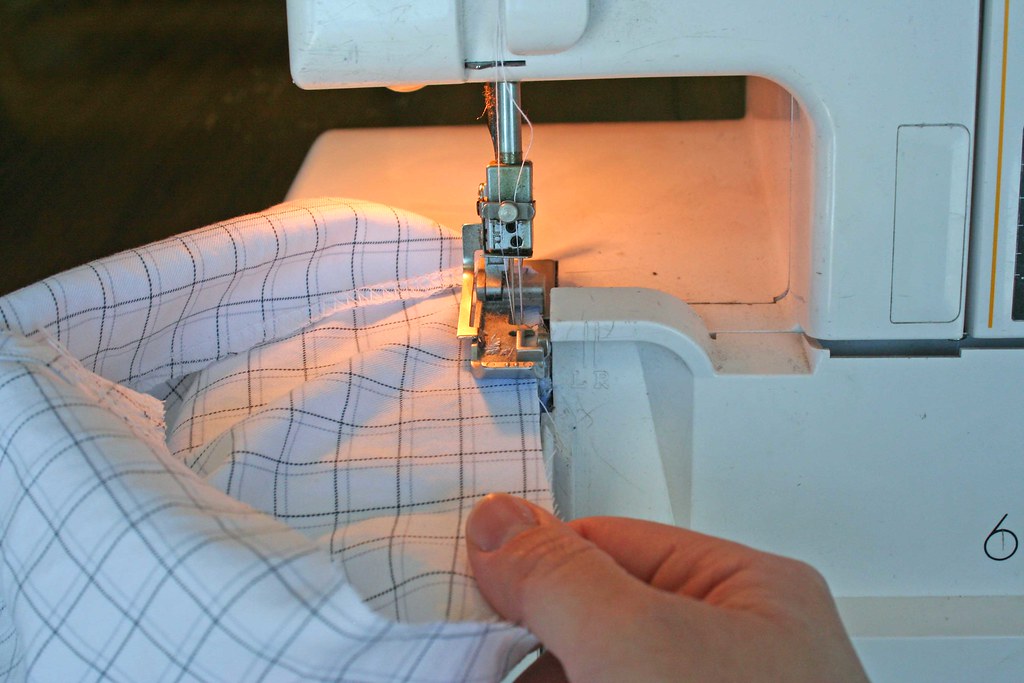
Next, fold the edge of the sleeve down 1/4 inch (or the width of your surge,)
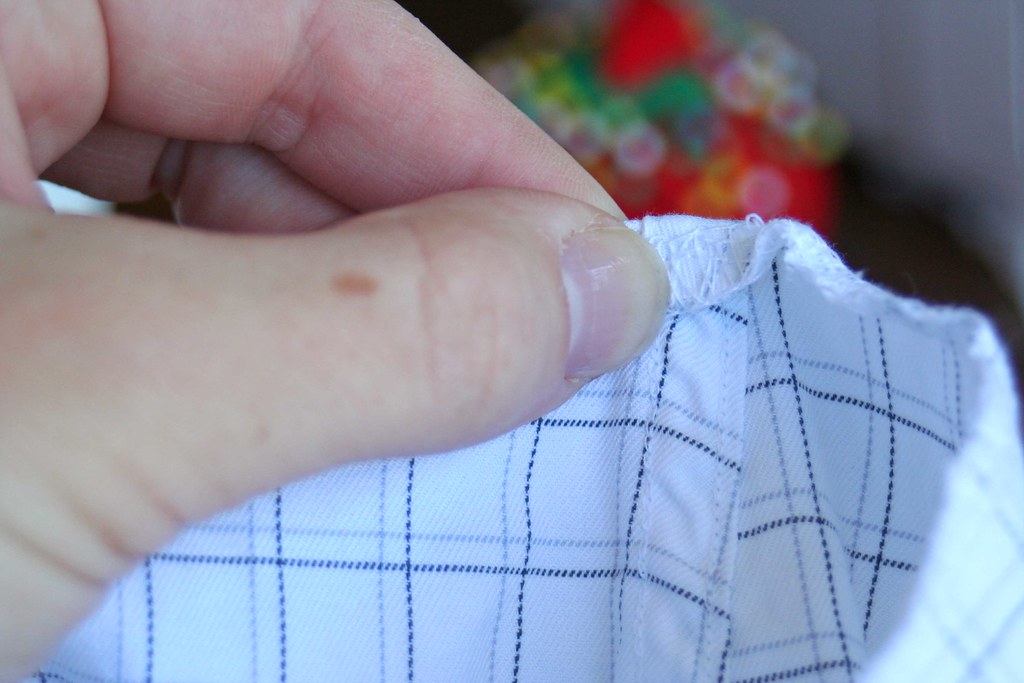
then fold it down one inch and pin:
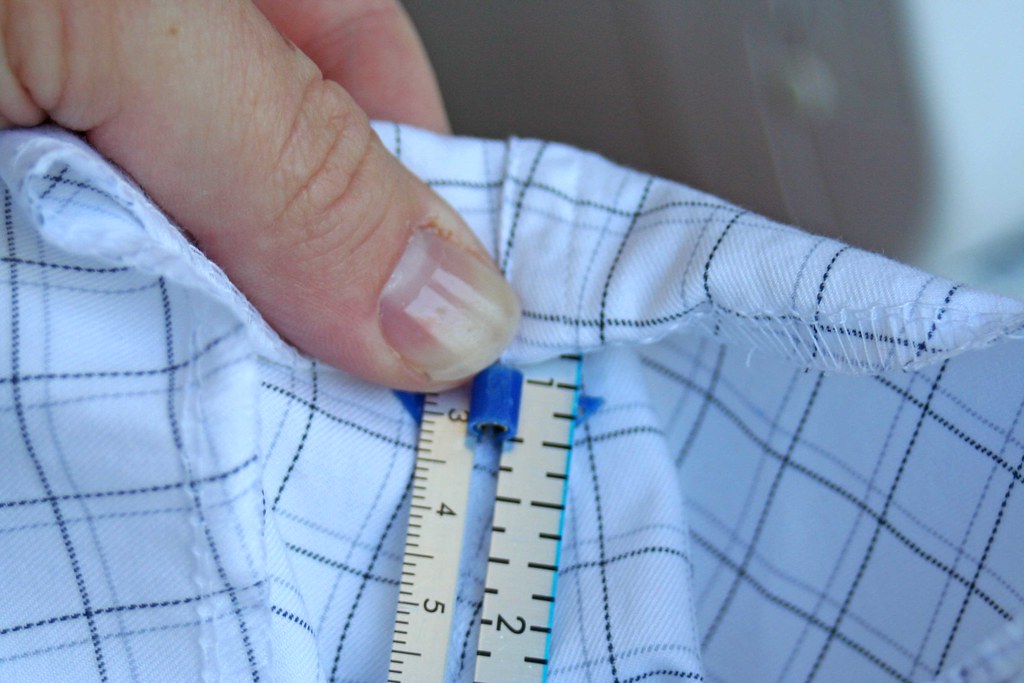
Measure and pin all the way around each sleeve (I use roughly 6 pins on each:)
Sew where you have pinned, stretching between pins slightly so that everything lays flat.
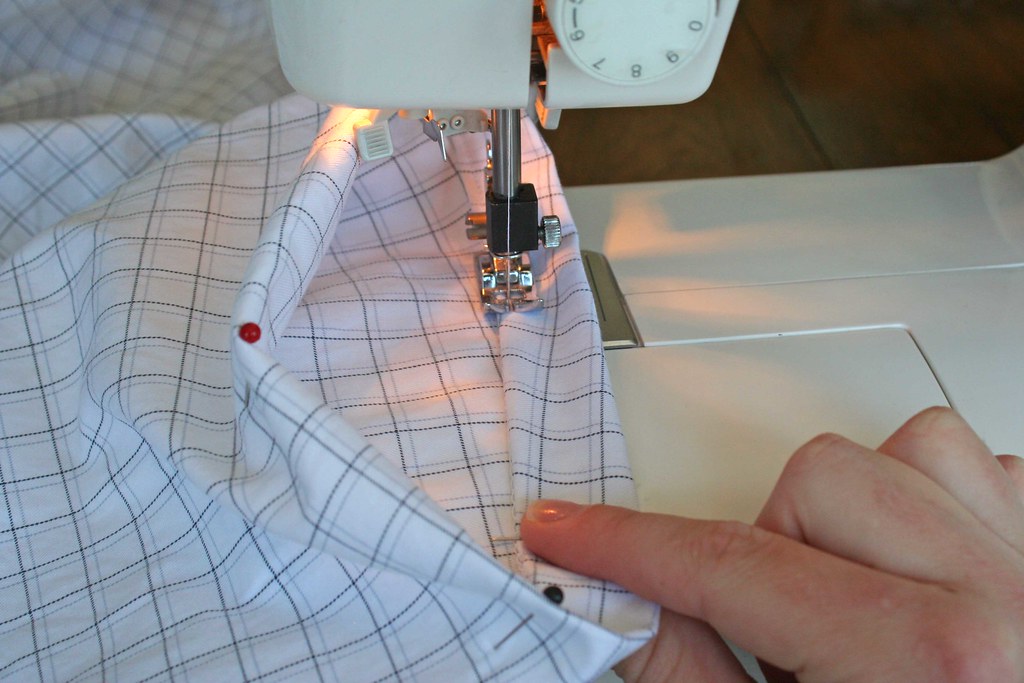
When you are finished sewing both sleeves, lay it flat on the ironing board and give it a good press:

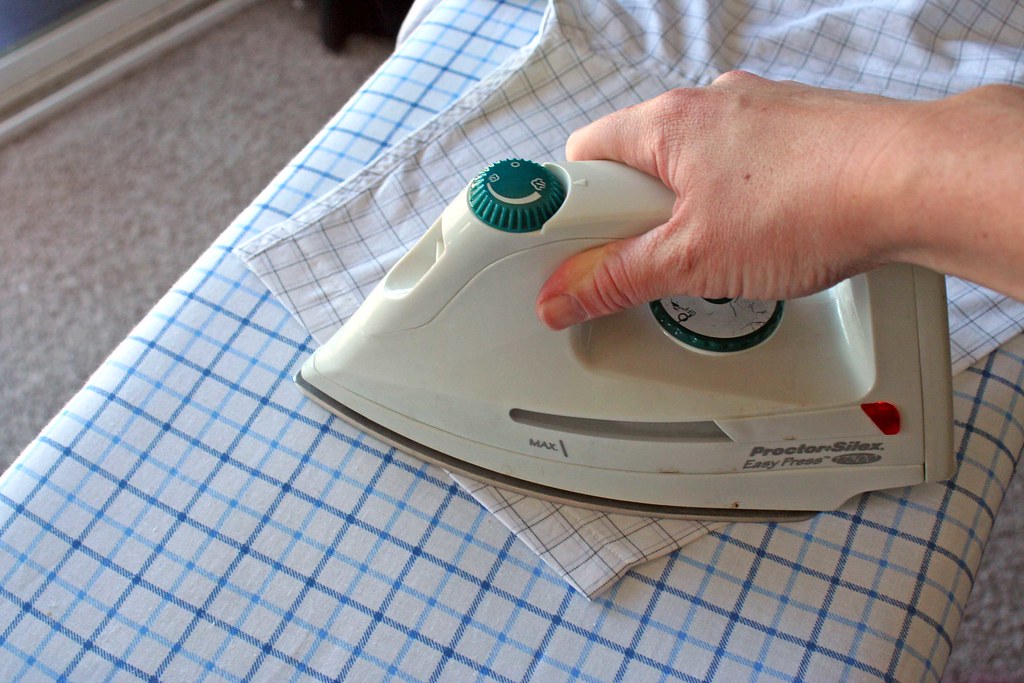
You have now converted a long-sleeved shirt into a nice, comfy, short-sleeved one. Ta-da!!















